

A History of Preston
in Hertfordshire


BACKGROUND
On 22 April 2010, I visited Princess Helena College, Preston where I was welcomed by the bursar, Dr James Bentall. During our conversation, James showed me a copy of a scrapbook about Temple Dinsley that had been assembled by pupils of the College. It included some pictures of Temple Dinsley and Preston that I had not seen before and I was intrigued as to their source.
From their content, it was obvious that they dated from the time of the conversion of the mansion that had been commissioned by Herbert Fenwick. It seemed logical that a descendent of Herbert might have ordered the original photographs, so I ordered a copy of his will and, using this, was able to prepare a tree of his progeny to find a likely candidate.
My attention was then drawn to an entry on the Genes Reunited (GR) web site for one
of Herbert’s sons. Here was someone who was evidently related to Herbert and had
an interest in Fenwick family history. Did this person know the location of the photographs?
That I was on the right path was confirmed by James Bental who e-
I e-
It transpired that my contact was Benedict Fenwick, the grandson of Herbert, and that he had a ‘huge photograph album’ of Temple Dinsley. We arranged to meet in the summer and in the meantime I researched the history of the Fenwick family. I found several news stories and discovered documents that related to the 1918 divorce of Herbert and Violet Fenwick in the National Archives. I then prepared a short booklet of my findings for Benedict to show my appreciation for his kindness in allowing me to photograph his album.
The following notes about the history of the Fenwicks and the Perkins (Violet Fenwick’s
family) are based on this research. My ensuing conversation with Benedict answered
a question about which I had often wondered: I had read, ‘Hill End was built for
the wife of the client of Temple Dinsley’. I was curious -
The Perkins family
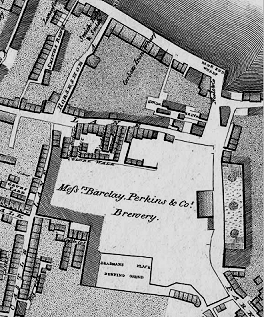
Trying to trace his parents was an exercise in serendipity. Quite by chance, I found one line in a news report of 1845 that disclosed his parentage. The reported stated that Charles was ‘the brother to the brewer of that name’ – important information as Perkins was a leading name in brewing during the nineteenth century. Armed with this new information, it was possible to search for Charles Perkins’ father.
In 1781, David Barclay (of Barclays Bank and a MP) purchased the Anchor Brewery at Southwark. He installed as its manager, the brewery’s previous superintendent, John Perkins (1730 – 1812) and so the firm of Barclays, Perkins and Co was born. (The site of the brewery near the River Thames is shown right.)
This company became the biggest brewery in the world. It produced 340,000 barrels of porter (or stout) in 1818. Even Charles Dickens mentioned Barclays Brewery – it was there that Mr Micawber sought a position in the hope that ‘something might turn up’.
Herbert George Fenwick married Violet Edith Perkins on 14 August 1895 at Bolam Parish Church which is in Northumberland.
It may be surprising to the reader that it is Violet’s ancestry that will be featured
first – but there is good reason for this, as will be seen. Initially, Violet’s forefathers
could be traced back to the marriage of Charles Perkins and Jane Barkley in 1816.
The couple had twelve children. Charles (1784c -
John Perkins married Amelia Bevan but died when attending Brighton races when a horse owned by Lord Bolingbroke was irritated by an insect and lashed out, kicking John in the head.
The brewer to whom the reporter alluded in 1845 was Charles’ surviving eldest son, Henry. Evidently, he and Charles Perkins were brothers, but how could this be confirmed? There is a baptism of a Charles Perkins at St Saviour’s, Southwark in May 1785 (where John married). I have checked the parish record and found that the names of his parents are illegible, but there can be little doubt that Charles was the son of John and his wife, Amelia, especially when Charles’ choice of marriage mate is taken into consideration – she was Jane Barclay.
Charles and Jane’s second son was Edward Moseley Perkins (1821-
Edward and Octavia’s son, Charles Perkins (1851-
The Fenwick family
Clearly, with inter-
Herbert George Fenwick was born at the Bristol Hotel, Edinburgh in 1870. After his
marriage to Violet, in 1901, the couple with four-

The Fenwicks were an established family of bankers in Northumberland during the nineteenth
century. Herbert’s grandfather, George (1811-
George’s son, George Anthony Fenwick (1840 -
When his will was proved in 1905, Charles Perkins’ net estate was almost £480,000. After providing for his wife and settling various legacies bequests, Charles left the residue of his estate to his two daughters, Violet Edith and Nancy.
A few years later, in 1908, Herbert and Violet Fenwick bought Temple Dinsley. Almost
immediately, Sir Edwin Lutyens was engaged to extend the mansion. He was introduced
by Mark Fenwick for whom Edwin had designed Abbotswood at Stow on the Wold. As well
as this construction programme, over the next five years or so the Fenwicks commissioned
the building of several houses (including the mansion at Hill End which was intended
for Violet’s friend, Mrs Gwendolen Fellows) designed by Lutyens around Preston, which
has produced a uniform feel to the architecture of the area. This re-
The couple had four children, the last three of whom were born at Temple Dinsley. Sadly, the eldest, Charles drowned during a fishing expedition to Norway in 1912/13.
Like many of the ladies of Temple Dinsley, Violet Perkins took an interest in Preston
School which was on her doorstep. The school log-
From around 1913, the relationship between Herbert and Violet became strained (which may be the reason Violet ordered the building of ‘Hill End’). This culminated in a divorce in October 1917. During this time, Violet continued to live at Temple Dinsley. The mansion was then sold in 1918.
A photograph album of the Fenwicks
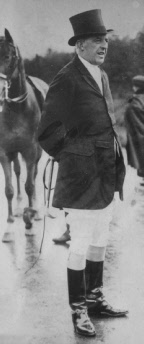
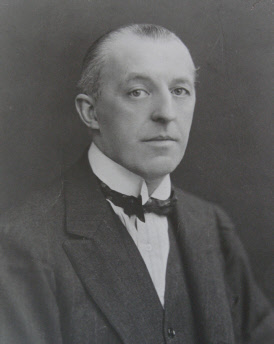
Herbert George Fenwick (1870 -![]()
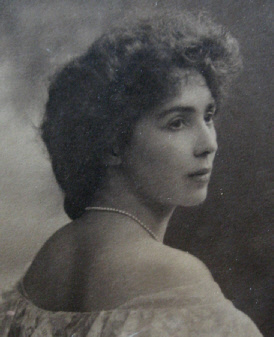
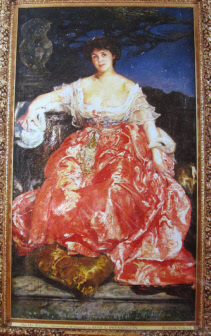
Violet Edith Fenwick
(The portrait is entitled, ‘On the Terrace’ and was painted by Annie Swynnerton (1844
-
the Manchester School of Art and then in Paris and Rome. Bottom right of the frame is inscribed,
‘British School’ which is perhaps a reference to the school in Hitchin)
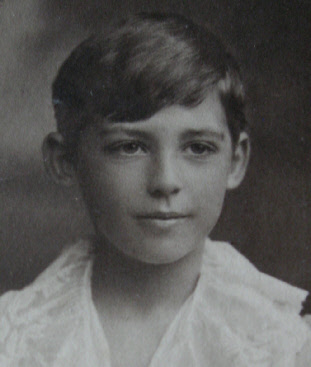
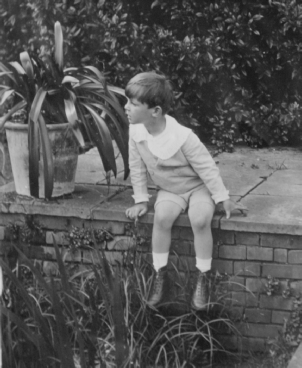
Charles Fenwick
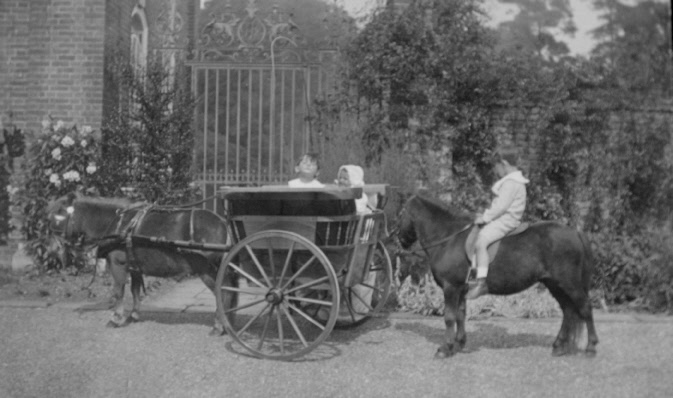
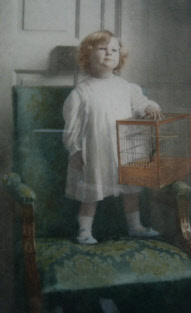
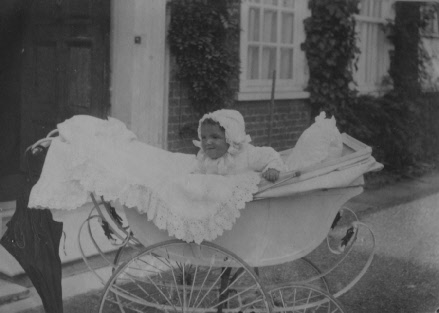
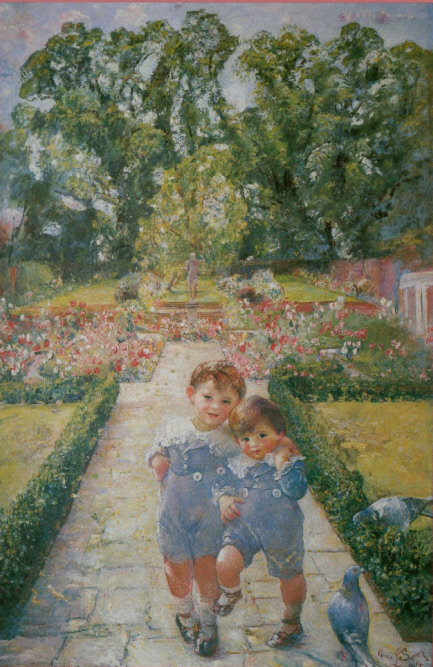
(Left to right) David, Rachel and Jonathan)
David and Rachel
David (left) and Jonathan in the garden of Temple Dinsley.
(This was also painted by Annie Swynnerton)
(I am grateful to Herbert and Violet’s grandson, Benedict Fenwick, for providing these photographs
and giving permission to reproduce them here. Benedict has traced his ancestry,
appropriately entering their details in a leather-
breeding details of racing horses -

Documents revealed by new catalogue entries at Hertfordshire Archives and Local Studies and a recent meeting with Benedict Fenwick have shone more light on his grandmother, Violet Fenwick’s, key role in the evolution of the building stock of Preston in the early part of the twentieth century.
As already noted, in 1908, Herbert Fenwick purchased the Temple Dinsley Estate from
James Barrington-
Various cottages around Preston were also purchased hy Herbert from the Pryor brothers. And in September 1910, Herbert also bought land at Hill End, near Preston.
By the hand of Lutyens, Temple Dinsley was remodelled and several new cottages were built as well as the Hill End mansion. The latter was ordered by Violet Fenwick for a dear friend, Gwendolen Dorothy Fellows (nee Jefferson). She had recently divorced her husband, Coulson Churchill Fellows who later died in 1915 from an illness contracted on active service.
Then, on 15 January 1913, Herbert borrowed a further £6,200 at 3.75% from Sir Joseph Frederick Laycock and William Edmund Paget. Sir Joseph haled from the same area as Violet and was a childhood friend. He was also a trustee of her son. William’s wife, Barbara Paget’s father was William Slingby Hunter. He was a brother of Violet’s mother. So the loan was provided by two rich men from Violet’s circle of friends. The loan was to be repaid in instalments: £2,100 due on 30 January 1912 and the remainder in the following July and January. These repayments were not met.
In July 1914, Herbert borrowed a further loan of £2,100 from Laycock and Paget, making a total debt to the pair of £8,300. This financed the rebuilding work at Preston.
On 30 June 1916, the full debt was transferred from Herbert to Violet.
That same day, all of Herbert’s holdings at Preston were conveyed from Herbert to Violet. The deed notes, ‘...the hereditaments were purchased by the husband at the request of the wife’ out of monies standing in their joint bank account and HGF’s account..’The greater part of which monies arose from the seperate income of the wife’ and ‘the husband admits that the purchase monies...were satisfied wholly out of monies belonging to the wife’.
As a result, Violet was the sole owner of the Temple Dinsley Estate. She sold the Estate to Douglas Vickers on 24 May 1918 and, subsequently, the Hill End Mansion on 5 July 1918 for a total sum of £55,000)

ADDENDUM -